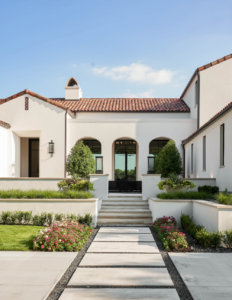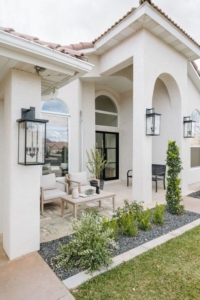Stucco in Historical Architecture: Timeless Elegance
Architectural beauty has the power to transport us to different times and places, evoking a sense of history and charm that captivates the imagination. Among the various architectural elements that contribute to the allure of historical buildings, stucco holds a special place. In this blog post, we’ll embark on a journey through time to explore how stucco has graced historical architecture with its timeless elegance.
A Rich History of Stucco
Stucco is not a newcomer to the world of architecture. Its use dates back thousands of years, with origins in ancient civilizations like the Greeks, Romans, and Egyptians. Over the centuries, stucco has evolved, but its enduring appeal remains a testament to its timeless qualities.
The Influence of Stucco in Different Architectural Styles
Ancient Roman and Greek Architecture
In ancient Rome and Greece, stucco was extensively used to adorn buildings. It allowed for intricate decorative details, such as friezes, cornices, and moldings, which defined the grandeur of classical architecture. Stucco’s ability to mimic the appearance of expensive marble and stone made it a cost-effective choice for embellishing structures.
Renaissance and Baroque Periods
During the Renaissance and Baroque periods in Europe, stucco took on new forms of artistic expression. Elaborate ornamental plasterwork adorned palaces, churches, and grand residences. Stucco reliefs and sculptural elements, often depicting mythological scenes, added opulence and drama to architectural facades and interiors.
Spanish Colonial Influence
In the Americas, particularly in regions with Spanish colonial heritage, stucco played a crucial role in defining the architectural style. The adobe construction prevalent in these areas was often covered with stucco finishes that provided protection against the elements and enhanced aesthetic appeal. The white stucco facades of missions and haciendas remain iconic symbols of this architectural era.
Mediterranean Revival and Mission Revival Styles
In the early 20th century, the Mediterranean Revival and Mission Revival architectural movements revived the use of stucco in the United States. Stucco became a hallmark of these styles, adorning buildings with smooth or textured finishes, arched doorways, and red-tiled roofs. This revival movement brought a touch of old-world charm to American architecture.
Art Deco and Modernist Movements
Even in the modernist era of the 20th century, stucco continued to play a role in architectural design. Art Deco and Streamline Moderne styles often featured stucco surfaces with geometric patterns and sleek, smooth finishes. Stucco became a canvas for innovative designs, reflecting the changing aesthetic sensibilities of the time.
The Timeless Appeal of Stucco
What makes stucco endure through the ages is its remarkable versatility. Stucco can be molded into various textures and shapes, painted in a spectrum of colors, and adapted to suit the aesthetics of different architectural styles. Its durability and resistance to weathering also contribute to its longevity.
Today, stucco remains a popular choice in both historical preservation and contemporary architecture. Its ability to seamlessly blend tradition with modernity is a testament to its timeless elegance. Whether you’re strolling through ancient ruins in Rome, visiting a historic mission in California, or admiring the facades of Art Deco skyscrapers, the presence of stucco serves as a reminder of its enduring role in shaping architectural history.




 Builder Boy, LLC
Builder Boy, LLC